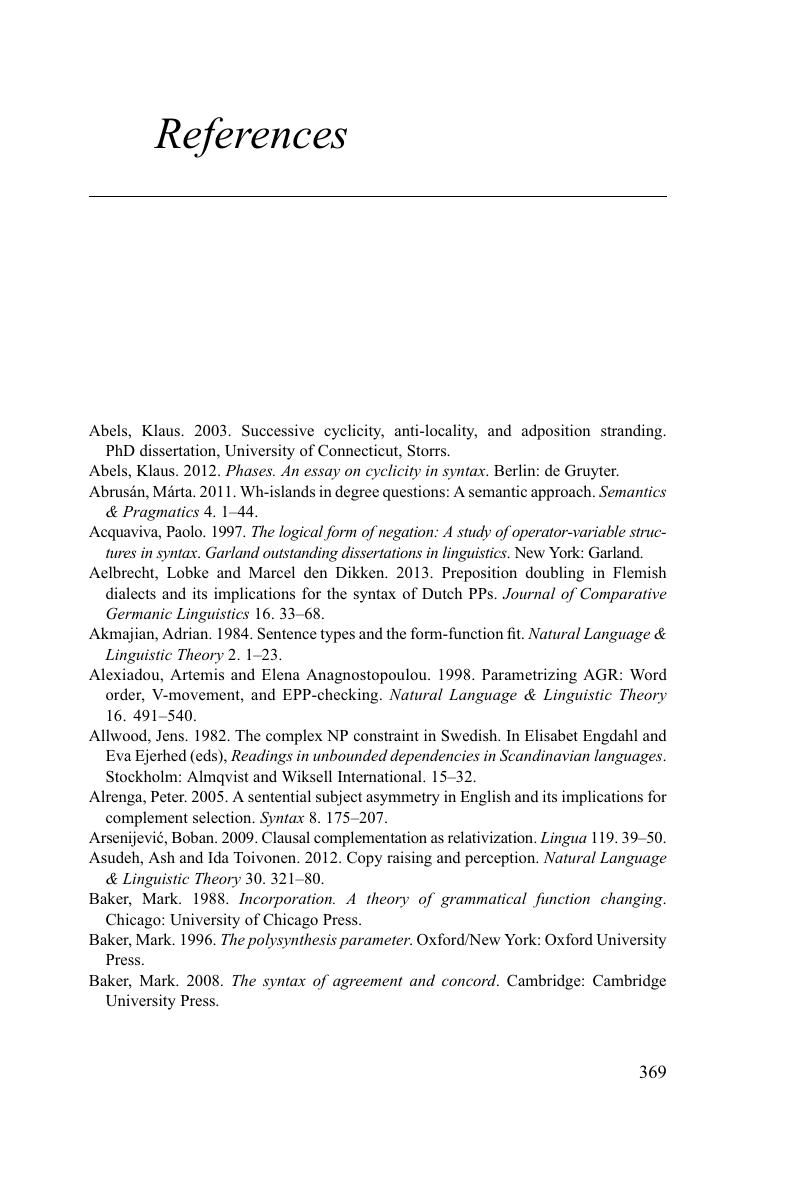Book contents
- Dependency and Directionality
- Cambridge Studies in Linguistics
- Dependency and Directionality
- Copyright page
- Dedication
- Contents
- Additional material
- Acknowledgements
- 1 Introduction
- 2 The Directionality of Structure Building
- 3 Find the Gap
- 4 A Syntactic Typology of Long Ā-dependencies
- 5 The Trouble with Subjects
- 6 Conclusion
- Abstracts and Keywords
- References
- Index
- References
References
Published online by Cambridge University Press: 19 June 2018
- Dependency and Directionality
- Cambridge Studies in Linguistics
- Dependency and Directionality
- Copyright page
- Dedication
- Contents
- Additional material
- Acknowledgements
- 1 Introduction
- 2 The Directionality of Structure Building
- 3 Find the Gap
- 4 A Syntactic Typology of Long Ā-dependencies
- 5 The Trouble with Subjects
- 6 Conclusion
- Abstracts and Keywords
- References
- Index
- References
Summary

- Type
- Chapter
- Information
- Dependency and Directionality , pp. 369 - 383Publisher: Cambridge University PressPrint publication year: 2018



